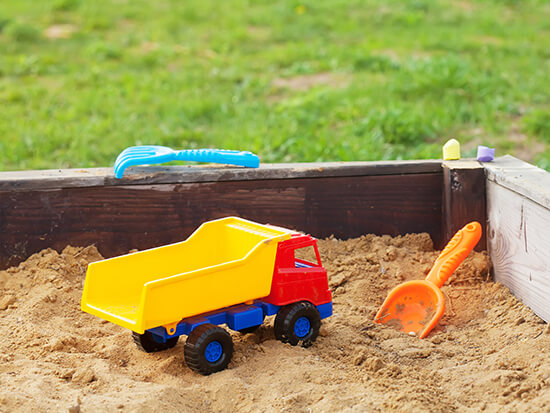
Following is a post written by Mark McCormick, a music educator teaching vocal music, music theory and composition at Mira Costa High School in Manhattan Beach, CA.
In the age of COVID-19, educators should remain focused on authentic learning with student self-discovery at its core.
______
The Kids Need Sand
As a kid growing up in the Midwest, I had a sandbox. It was in the shape of a turtle, and I can recall that I would spend sunny summer afternoons there with my sister creating imaginary worlds with whatever random toys we had at our disposal. It was a time of play, free of anxiety and filled with nothing but unburdened imagination.
Today, I am an adult, having chosen a teaching profession as my life’s passion. I have worked with students at the elementary through college levels, and I see the similarities that bind all learners. The desire for self-discovery, expression, and validation manifests itself in every grade level, and I recognize it as my job to make a connection and allow each student the opportunity to develop in a way that meets them authentically.
Since March 13, my classroom has been in a virtual space and I, like many of us, question my role as educator. How will COVID-19 impact our ability to connect with students as we move into the fall? As our hearts and minds become clouded by doubt and fear, I’m reminded of a very special evening I had a few years ago.
In 2015, two of my students were selected as the winners of the Los Angeles Spotlight Awards. A proud teacher watched two amazing young women knock the socks off a sold-out Disney Concert Hall in Los Angeles. Both of them, having worked tirelessly through their high school years developing their craft as performers, shined brightly that night solidifying their future as bold young artists.
Bursting with pride, I witnessed two remarkable performances and I thought, “How did this happen?” Surely, I as an educator didn’t treat them differently than any other student. As I read my name in the program for being a teacher of these astounding students, I couldn’t help but realize that all we do as educators is provide a space for our students to grow. Of course, we provide them with the nourishment they need, daily lessons, praise, redirection, and more opportunity, but I see now that beyond our subject areas, our students need their teachers to provide nothing more than the safe sandbox I had when I was a kid.
It’s no surprise that the top performing schools across the world value recess and play time when educating their students. Playing is an important part of children’s learning how to interact with their environment and with their peers (Hernández, 1998). As students gain skills that allow them to self-discover, we as educators need to provide environments in which students can authentically interact and “play.”
Many of us spent the last three months conducting classes where our student interaction was limited to tiny boxes on a computer screen, and I know we’re anxious to meet in person. I know that even if my entire class cannot meet, my goal will be to prioritize human interaction. As best I can, I intend to front load information that will allow my students to have deeper, more meaningful interactions with each other when we can be together. In doing so, we can encourage our students to live in the moment. It’s an effort to recreate what it felt like in that sandbox so many years ago. Authentic play.
As a music teacher, I envision my class, for a time either meeting online, meeting in person as a small group of 6–10 musicians in a large outdoor space or perhaps even meeting as a full ensemble where we safely can. I see them having done guided preliminary work online with peers, knowing that when meeting in person does occur, extraordinary things can happen. Experience has taught me that even in small groups, lessons experienced can be huge and when meaningful things happen, they stick.
This was the lesson I learned as a kid. Just as my parents provided me with the sandbox, I, as an educator, provide my students with a safe space–the tools to excel and the inspiration to create. Moving into an uncertain fall where we may experience the gamut of instruction from distanced to in person, we can make every moment purposeful with a redefining of our time together.
I have long valued building community in my classroom, and it’s our shared experiences that allow us all to pick each other up when needed. During this uncertain time, we can look at the possibilities rather than the downfalls; and as we plan for the future, I remind us all to think of the sandbox and our authentic selves.
Notes
Hernández, Yojani. “Child’s Play,” IDRA Newsletter (San Antonio, Texas: Intercultural Development Research Association, April 1998).


Leave a Reply
You must be logged in to post a comment.